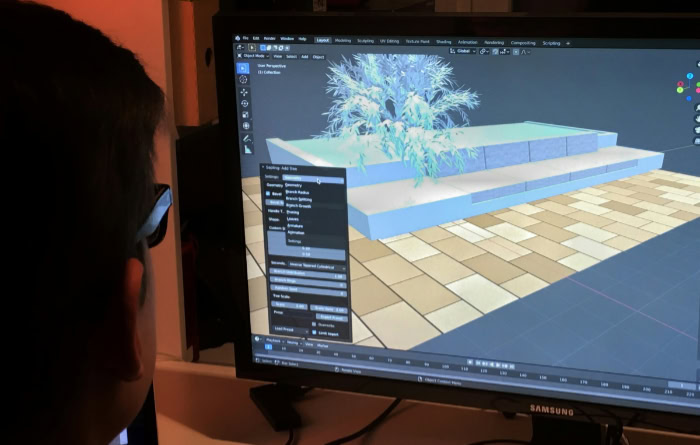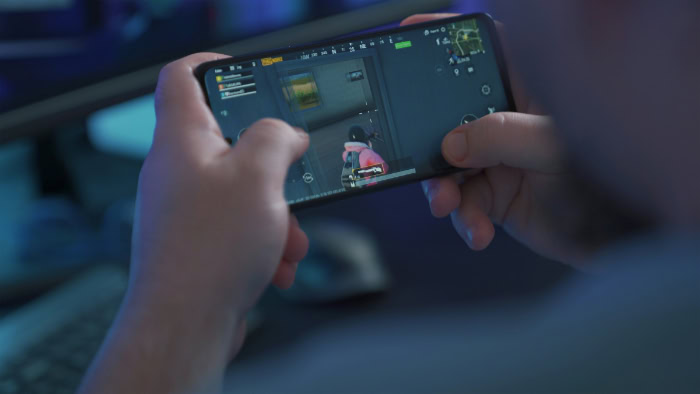The Ultimate Guide to Game App Development

Mobile games have become a source of entertainment, creativity, and even community for millions worldwide. From indie developers with big dreams to major studios pushing boundaries, making a successful game app requires more than just a great idea.
A structured approach is essential, blending creative vision with technical know-how and savvy marketing.
The Game Development Lifecycle
A successful game app springs from a well-structured development process. Each phase demands creativity, technical skill, and a clear sense of direction.
From laying the groundwork during pre-production to maintaining player interest after launch, each step plays a vital role in transforming an idea into an engaging, profitable game.
Pre-Production
Pre-production is the stage where strong ideas are shaped into actionable plans. Before a single line of code is written, the team starts by diving deep into market research to understand what gamers seek, what genres currently trend, and where gaps might exist.
Defining a target audience ensures that every design and marketing choice resonates with potential players.
Once the audience is clear, a comprehensive Game Design Document, or GDD, emerges as the project's blueprint. The GDD details everything from gameplay mechanics and narrative arcs to visual style and audio direction.
It forms the bridge between creative aspirations and practical execution.
Budget planning is another essential element, setting boundaries for what the project can achieve. Costs must be estimated realistically, covering everything from software licenses and asset purchases to salaries for team members.
Hiring the right talent, including developers, artists, and QA testers, brings specialized skills to the table and ensures the game’s vision is faithfully executed. A strong foundation during pre-production saves time and resources down the line, setting the stage for smooth development.
Production
Production brings ideas to life. Artists create vibrant 2D or detailed 3D models, craft animations, and produce immersive soundscapes tailored to the game’s world.
Developers translate the vision outlined in the GDD into interactive experiences through programming. They build core systems like physics, artificial intelligence, and intuitive controls, ensuring gameplay is responsive and enjoyable.
During production, regular playtesting helps identify what works and what doesn’t. Internal alpha tests allow teams to catch bugs early and refine gameplay, followed by closed or public beta tests that gather feedback from wider groups of players.
These insights fuel iterative improvements, leading to a more polished and balanced experience. Production is often the longest and most resource-intensive stage, requiring clear communication and flexibility as the team adapts to challenges and new ideas.
Post-Launch
A successful launch marks the start, not the end, of a game’s journey. Post-launch strategies like App Store Optimization help the game reach a broader audience by improving visibility in crowded marketplaces.
Generating excitement through social media, reviews, and player communities keeps momentum high.
Tracking analytics after launch offers valuable insights into player behavior, showcasing what players enjoy, when they leave, and where opportunities for improvement exist. Monitoring retention rates and analyzing in-app purchase patterns guide future updates and content decisions.
Rolling out regular updates keeps the experience fresh, fixes bugs, and introduces new features or events, encouraging players to return. Fostering an active, engaged community can turn casual users into loyal fans who help spread the word and sustain the game’s success over time.
Technical Architecture and Tools

Behind every hit game app lies a reliable technical foundation. Selecting the right technologies and mastering optimization techniques can be the difference between a smooth, engaging game and one that players abandon due to frustration.
Technical decisions impact everything from performance and graphics to monetization and scalability.
Choosing the Right Game Engine
Selecting a game engine shapes the entire development process and significantly affects the final product. Unity appeals to many indie developers thanks to its cross-platform support, user-friendly interface, and strong community resources.
Developers can create both 2D and 3D games, then publish to multiple platforms with minimal extra effort. Unreal Engine stands out for its ability to deliver visually stunning experiences.
High-fidelity graphics and realistic physics make it a favorite among those aiming for AAA-quality titles. Visual scripting tools also allow designers to prototype ideas quickly, reducing development bottlenecks.
Godot has emerged as a flexible, open-source option that is especially well-suited for 2D projects or teams that value customization and transparency. With a lightweight footprint and active community, Godot offers a great starting point for those new to game development or anyone seeking more control over the engine itself.
The right choice comes down to your project’s needs, development team experience, and specific features required for your game.
Programming Fundamentals
A solid grasp of programming is vital for building responsive and feature-rich games. C# is widely used with Unity for scripting game logic, user interfaces, and gameplay systems.
C++ powers Unreal Engine, giving developers granular control over performance and memory management. Depending on the target platforms, additional languages like Swift for iOS or Kotlin for Android can come into play, especially when integrating platform-specific features.
Modern games rely heavily on third-party APIs to create a connected experience. Monetization often involves incorporating ad services such as Google AdMob.
Social features, cloud save options, and multiplayer support all require careful integration of external APIs. Well-structured code, modular architecture, and diligent testing ensure stability and make future updates more manageable.
Optimization for Performance
Performance optimization keeps players engaged and prevents negative reviews. Shorter load times can be achieved through asset compression and the use of texture atlases, which bundle graphics efficiently.
Asset management strategies help reduce download sizes and improve runtime performance.
Mobile devices vary widely in processing power and screen resolution, so testing on a range of hardware is essential. Ensuring smooth gameplay across both high-end devices and older models broadens your potential audience.
Developers often address this challenge by adjusting graphics settings dynamically based on device capabilities.
Battery life and memory usage present their own challenges. Resource leaks or inefficient code can quickly drain batteries or lead to crashes.
Careful profiling, regular code reviews, and real-world device testing are essential for catching performance bottlenecks early. Maintaining a high level of polish throughout the technical architecture keeps your game running smoothly, leaving a positive impression on players from the moment they launch the app.
Designing for Engagement and Retention

Capturing player attention is only the first hurdle in mobile game development. Sustained success relies on building experiences that players want to return to, day after day.
Strong design choices in user interfaces, gameplay loops, and immersive technology encourage both short sessions and long-term investment.
UI/UX Best Practices
A well-crafted user interface invites players in and keeps frustration at bay. Menus should feel natural to navigate, with touch-friendly buttons positioned for ease of use on any device size.
Icons and prompts must be legible and visually distinct, ensuring players can access all features without confusion. Responsive layouts adapt gracefully to various screen sizes, making the game feel polished no matter what device is in hand.
A balanced approach blends attractive visuals with practical needs. Clear progress bars, straightforward notifications, and intuitive feedback help players stay informed and motivated.
Subtle animations and satisfying sounds can make each interaction feel rewarding. Crafting the user experience with this level of care keeps players focused on the fun, not on fighting the interface.
Core Gameplay Mechanics
Lasting engagement depends on gameplay that is easy to grasp but rewarding to master. Creating satisfying loops where players earn rewards, face fresh challenges, and progress through the game gives them reasons to keep playing.
Well-designed reward systems, such as unlockables, achievements, and daily bonuses, provide positive reinforcement.
Difficulty that remains fair yet stimulating caters to a wide range of players. Dynamic difficulty adjustment tailors the experience, reducing frustration for newcomers while still offering depth for seasoned gamers.
Smartly tuned levels and responsive controls allow everyone to find their preferred style of play, keeping both casual and dedicated players invested.
Immersive Technologies
Modern games can captivate through immersive features that push the boundaries of traditional play. Augmented reality adds excitement to simple puzzles by blending game elements with real-world locations, encouraging movement and exploration.
Virtual reality creates wholly new experiences with 360° environments that draw players deeper into fictional worlds.
Artificial intelligence brings life to non-player characters, allowing for smarter enemies, lifelike companions, or evolving narratives. Procedural content generation expands replayability by introducing new challenges, layouts, or scenarios each session.
Harnessing such technologies not only delights players but also keeps your game feeling fresh well after release.
Monetization and Marketing Strategies

Reaching players and generating revenue are just as important as creating a game that delivers fun and value. Monetization and marketing strategies lay the groundwork for your game’s commercial success and long-term growth.
Well-thought-out plans ensure not only a return on your investment, but also a positive player experience that sparks lasting loyalty.
Revenue Models
Selecting the right revenue model sets the tone for player expectations and shapes how you grow your business. Freemium games, which offer the core experience for free while selling in-app purchases or cosmetic upgrades, attract wide audiences and lower barriers to entry.
These games rely on engaging content and a gentle approach to monetization, encouraging players to spend voluntarily. On the other hand, premium games require an upfront payment. This model can deliver a more straightforward experience, free from constant prompts or ads, but usually attracts fewer initial downloads.
Balancing ads with player comfort is crucial. Rewarded video ads, where players choose to watch commercials in exchange for in-game bonuses, offer a fair trade that feels less intrusive.
Non-intrusive banner ads placed thoughtfully within menus or between levels minimize disruption. Some developers go further by introducing subscription models, giving players access to exclusive content, special features, or an ad-free experience for a monthly fee. A flexible approach, combined with ethical practices, creates a sustainable income stream while maintaining player goodwill.
Pre-Launch Marketing
Building anticipation before release can make a huge difference on launch day. Teaser trailers spark curiosity and introduce the game’s visual style, leaving viewers eager for more.
Social media campaigns keep audiences engaged and informed, while also building a community around the project. People love to feel involved, and regular updates, images, and behind-the-scenes glimpses encourage sharing and discussion.
Partnering with influencers or content creators gives your game a boost, as trusted voices lend credibility and extend your reach to new audiences. Beta testing is a powerful tool not only for gathering feedback but also for generating buzz.
Early access players can share their experiences, recommend improvements, and spread positive word-of-mouth well ahead of launch.
Post-Launch Growth
After release, sustained success relies on keeping your player base engaged and eager for more. Live operations, or “live ops,” introduce time-limited events, special challenges, and battle passes that offer new rewards and objectives over time.
Seasonal content, holiday events, and themed updates provide reasons for players to return regularly, deepening their connection with the game and the community.
Player data, such as in-game behavior and purchasing patterns, helps refine your monetization approach. Adapting in-game stores, reward systems, and promotional offers based on real feedback keeps the experience balanced and appealing.
Continuous attention to player preferences and market trends ensures that your game remains fresh, relevant, and profitable long after the initial launch excitement fades.
Overcoming Common Challenges

Game app development brings technical, regulatory, and operational challenges that can quickly impact user experience and a game’s reputation. Proactively solving problems and planning for growth ensures smoother launches, happier players, and long-term stability.
Addressing these critical areas thoughtfully helps teams avoid pitfalls and deliver a quality product that stands the test of time.
Technical Hurdles
Technical setbacks, if left unchecked, can create frustrating experiences for players and developers alike. Players expect games to run smoothly, even when network connections are unreliable.
Offering offline modes lets users continue playing by syncing progress once they reconnect, which is especially valued in mobile environments where Wi-Fi and data access can be unpredictable.
Bugs and crashes not only disrupt enjoyment but can also lead to negative reviews and decreased retention. Integrating automated testing tools during development helps identify glitches early, ensuring that major bugs do not slip through to release.
Ongoing testing throughout updates and adding robust error reporting mechanisms allow teams to respond quickly, keeping the game stable as new content is introduced.
Compliance and Legal Considerations
Legal compliance is more than a box to check; it protects both players and developers from disputes and setbacks. Each app store, such as Apple’s App Store and Google Play, maintains strict guidelines regarding content, payment methods, and data practices.
Taking the time to carefully tailor your submission to each platform’s requirements prevents unnecessary rejections or costly delays.
Data privacy laws, like Europe’s GDPR and the United States’ COPPA, set standards for how user data is collected and stored. Games aimed at children must incorporate parental controls and obtain necessary permissions.
Transparent privacy policies, accessible consent forms, and secure data-handling processes help maintain trust and keep the game available in global markets. Staying proactive about regulations saves time and protects your brand reputation.
Scaling and Long-Term Support
A popular game often grows beyond initial expectations, so the ability to scale is essential. Transitioning multiplayer features and real-time services to cloud infrastructure provides the reliability and flexibility needed to handle rapid spikes in player activity.
Cloud tools help maintain low-latency connections, balance player loads, and minimize downtime.
Long-term support extends a game’s lifespan and strengthens community loyalty. Transparent update logs communicate what has changed while reassuring players that their feedback is valued.
Prompt bug fixes, regular content updates, and open communication channels foster trust. Prioritizing support and scalability creates a foundation for lasting engagement and continued growth, allowing your game to thrive well into the future.
Conclusion
Creating a successful game app involves more than simply coding an idea into existence. From careful planning and technical decisions to thoughtful design and effective marketing, each step builds on the last to shape a product players will love.
Staying adaptable and placing players at the center of every decision can dramatically improve both engagement and long-term success. Continuous learning-studying feedback, observing trends, and refining your approach-keeps your projects relevant and enjoyable. The game industry is always changing, so don’t be afraid to experiment and innovate.
Every iteration brings a chance not only to improve, but to set new standards within a thriving and competitive world of mobile gaming.


